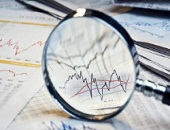In India and China, “large state-owned banks often have a significant constraint on their ability to manage liabilities,” said Professor Moorad Choudhry from the Department of Mathematical Sciences at Brunel University and author of Principles of Banking. He was the second of three panellists at the webinar Banking in Emerging Markets held on November 20, 2014, organized by the Global Association of Risk Professionals, and his role was to describe “operational realities.”
The 2018 advent of new Basel III rules for capital and liquidity requires 100 percent compliance with new rules on the liquidity coverage ratio (LCR) and the net stable funding ratio (NSFR), Choudhry noted. “The LCR will become a drag on P&L due to larger liquidity reserve requirements,” he said, referring to profit and loss (P&L), or income, statements.
The LCR will influence the mix of liabilities that a bank chooses to hold, because “certain types of deposits are LCR-efficient.” Choudhry presented a worked example of a commercial bank whose LCR was greater than 100 percent. The numerator of the LCR was defined as the amount of high-quality liquid assets (HQLA). The denominator was defined as the 30-day cash outflow calculated assuming stressed economic conditions.
The deposits were chiefly retail and corporate, with a very small amount (after netting) from other financial institutions. However, the liquid asset buffer had a large contribution arising from the outflow assumption for financial institutions and large corporates deposits, and a relatively small amount from retail deposits. “Retail deposits translate to the lowest outflow,” Choudhry said, whereas “interbank has a high outflow.”
All else being equal the financial sector will have a lower overall return due to Basel III and the new LCR rules, therefore the LCR analysis should be done by every bank—and every investor in banks, including those banks in India and China.
The impact of state ownership will be significant, since government-owned banks are expected to “do business with everyone.” They will thus experience the biggest “drag” on their P&L returns. Choudhry said this is simply a “reality of state-owned banks that needs to be accepted by [their] shareholders.”
Choudhry described potential operational changes under liberalized regimes that are currently favoured in India and China. There will be greater flexibility with respect to balance sheet structuring, allowing for a mix of liability types and concentrations. “All else being equal,” he noted, “this should result in higher net interest income (NII) and net interest margin (NIM).”
“Expect to see greater specialization and niche customer targeting,” Choudhry said—yet another potential response by banks in emerging markets, as they adjust to the new Basel III regulatory regime. ª
Click here to view the webinar presentation on banking in emerging markets. Choudhry’s section appears on slides 12 to 17.
Click here to view information on Principles of Banking, by Moorad Choudhry. Material pertaining to the presentation can be found in Chapters 2, 12-15, and 18.


